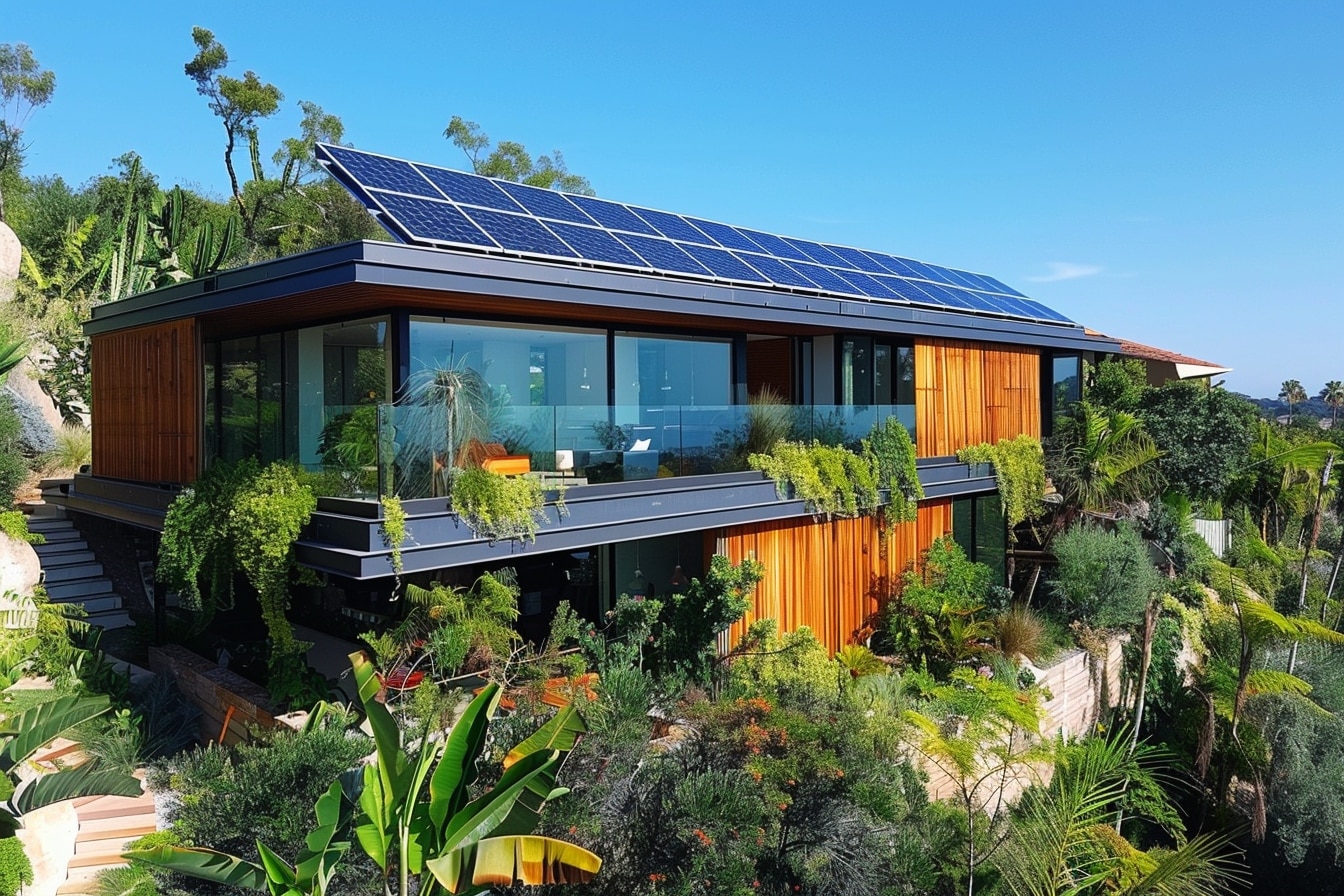
Why Eco-Friendly Real Estate is Booming
The real estate landscape is evolving, and one of the most significant trends is the growing demand for eco-friendly properties. More and more investors and homebuyers are prioritizing sustainability, driven by a desire to reduce their environmental impact, lower operating costs, and improve their overall quality of life. This shift in consumer preference is creating exciting opportunities for those looking to invest in the green real estate market.
The Benefits of Investing in Sustainable Properties
Investing in eco-friendly real estate offers a multitude of advantages, both financially and ethically. Understanding these benefits is crucial for making informed investment decisions.
Reduced Operating Costs
Green buildings are designed to be energy-efficient, utilizing features like solar panels, high-performance windows, and efficient HVAC systems. This translates to significantly lower utility bills for tenants and property owners. Lower operating costs increase the net operating income (NOI) of a property, making it a more attractive investment.
Increased Property Value
Eco-friendly certifications like LEED (Leadership in Energy and Environmental Design) and Energy Star can significantly increase a property's value. Buyers and renters are often willing to pay a premium for sustainable features, recognizing the long-term cost savings and health benefits associated with green living. A higher property value translates to a better return on investment (ROI).
Enhanced Tenant Appeal
In today's market, sustainability is a major draw for tenants, especially millennials and Gen Z. Eco-friendly properties attract environmentally conscious renters who are willing to pay more for a living space that aligns with their values. This leads to lower vacancy rates and a more stable rental income stream.
Healthier Living Environments
Green buildings prioritize indoor air quality, using non-toxic materials and advanced ventilation systems. This creates healthier living environments for occupants, reducing the risk of respiratory problems and other health issues. This is a major selling point for families and individuals concerned about their well-being.
Positive Environmental Impact
Investing in eco-friendly real estate is a tangible way to contribute to a more sustainable future. Green buildings consume less energy, reduce water waste, and minimize carbon emissions, helping to mitigate climate change and protect the environment. This allows investors to align their financial goals with their ethical values.
Types of Eco-Friendly Properties to Consider
The green real estate market encompasses a wide range of property types, offering diverse investment opportunities.
Energy-Efficient Homes
These homes are designed to minimize energy consumption through features like solar panels, energy-efficient appliances, and proper insulation. Investing in energy-efficient homes can provide a steady stream of rental income and appreciation potential.
Water-Conserving Properties
Properties with water-saving features like low-flow toilets, drought-resistant landscaping, and rainwater harvesting systems are increasingly attractive in regions facing water scarcity. These properties offer long-term cost savings and appeal to environmentally conscious renters.
LEED-Certified Buildings
LEED certification is a widely recognized standard for green building design and construction. Investing in LEED-certified buildings demonstrates a commitment to sustainability and can attract premium tenants and buyers.
Green Renovations
Renovating existing properties with eco-friendly features is another way to enter the green real estate market. This can involve installing solar panels, upgrading to energy-efficient appliances, or improving insulation. Green renovations can increase a property's value and attract environmentally conscious tenants.
Sustainable Communities
Master-planned communities that prioritize sustainability are gaining popularity. These communities often feature green buildings, walkable streets, and access to public transportation, creating a more livable and environmentally friendly environment.
Finding and Evaluating Eco-Friendly Real Estate Investments
Successfully investing in green real estate requires careful research and due diligence. Here are some tips for finding and evaluating eco-friendly properties:
Research Local Market Trends
Understand the demand for green properties in your target market. Are there specific neighborhoods or areas where sustainability is highly valued? Research local regulations and incentives related to green building.
Look for Green Certifications
Prioritize properties with green certifications like LEED, Energy Star, or Green Globes. These certifications provide assurance that the property meets specific sustainability standards.
Assess Energy and Water Efficiency
Evaluate the property's energy and water consumption. Request utility bills and conduct an energy audit to identify potential areas for improvement.
Consider the Location
Choose properties in walkable neighborhoods with access to public transportation. This reduces reliance on cars and promotes a more sustainable lifestyle.
Factor in Long-Term Costs
Consider the long-term costs associated with maintaining a green property. While upfront investments in sustainable features may be higher, they can result in significant cost savings over time.
Work with Green Real Estate Professionals
Partner with real estate agents, property managers, and contractors who specialize in green building. They can provide valuable insights and guidance throughout the investment process.
Financing Options for Eco-Friendly Real Estate
Several financing options are available to support investments in green real estate.
Green Mortgages
Green mortgages offer favorable terms for homebuyers who purchase energy-efficient homes or make green renovations. These mortgages often come with lower interest rates or other incentives.
Energy-Efficient Mortgages (EEMs)
EEMs allow borrowers to finance energy-efficient improvements as part of their mortgage. This can help homeowners reduce their energy bills and improve the value of their property.
Government Incentives
Many government agencies offer tax credits, rebates, and grants for green building projects. Research available incentives in your area to reduce your investment costs.
Private Lending
Some private lenders specialize in financing green real estate projects. These lenders may be more flexible than traditional banks and offer customized financing solutions.

0 Comments